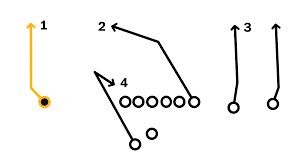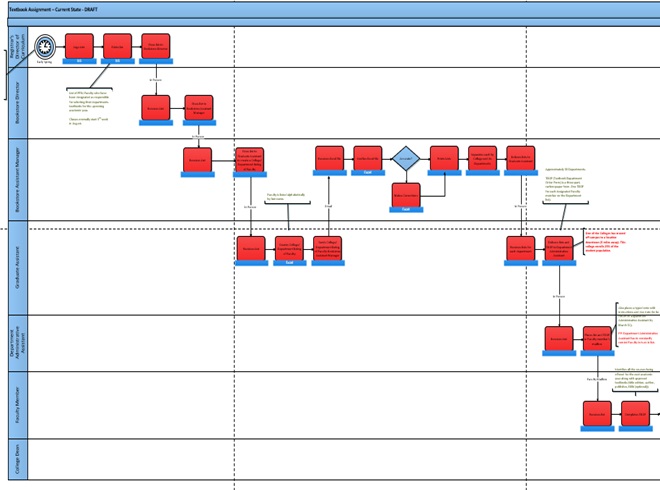Why Consider Lean Process Improvement or Process Management?
Recently, on a videoconference call, the CEO for one of our clients remarked with a lot of urgency that the company needs to take this opportunity, caused by the slowdown in business, to finally address some of the process issues that have been causing consistent issues with the on-time and accurate delivery of customer orders. To me, as a self-proclaimed “process zealot” and occasional contrarian, this was music to my ears. This is primarily because some organizations have become overwhelmed by the fear today’s events are causing, they become paralyzed and do not take the opportunity to address challenges and employ useful tools such as Lean or process improvement, for performance challenges they have in their own organization.
My hope is that this article gives you at least 3 useful ideas to take back and put in practice.

TSI’s Experience with Process Improvement, Lean and Project Management
At TSI, we have been consulting and training in the area of process improvement and Lean Project Management for over 25 years. We have helped many organizations think about efficiency and effectiveness differently so they can make substantial financial and operational gains by implementing Lean or some variation of Process Improvement.
We have also trained others on Lean and Process Improvement throughout the years. We want to use this post to focus on process improvement, Lean process management and some of the different variations of process improvement there are. Here, we will answer the question “What is lean management?” and explain the difference between Lean, Six Sigma, and Business Process Management (BPM), basic Process Improvement. Heck, we’ll even define what a process is. Best of all, at the bottom, we have provided a summary table for you that describes the various methods of process improvement along with some of their relative strengths and weaknesses. Feel free to share this with others too. Some might say this makes for a great birthday present.
Lean and Process Management Fundamentals
Let’s start with some basics – What is a Process? In short, it is the recurring work you (or your team or colleagues) do. Here is a classic definition that will help distinguish a process from merely a “task”: A process is a sequence of activities, triggered by time or an event, that is intended to produce a specific result (hopefully of value) for an internal and/or external customer.
In simple terms, when you think about your organization, it is very likely the following occur:

A more granular way to describe these are as follows;
- Procure to Pay
- Idea to Offering (think New Product or New Service Development)
- Market to Order
- Quote to Cash
- Order to Cash
- RMA (Return Material Authorization) – Sales Return Cycle.
- Forecast to Delivery
- Financial Plan to Report
- Issue to Resolution
- Plan to Inventory
- Business Management.
In addition to these, one can create additional lists of process if you think about other disciplines such as Human Resources, Information Technology, and others. And, based on the industry you are in, there are other unique processes related to the unique aspects and regulatory requirements of that industry.

Sometimes when we think about processes, we draw comparisons to sports and since it is almost football season, the “play” an offense might run is another example of a process. This might start (or is triggered by) with thinking about the play, calling the play, lining up for the play and then executing the play.
As you can imagine, this might provoke you in thinking: are we running the right plays (or processes) to win? Are we running the plays correctly? With the right people or under the right conditions? Do we need better equipment (or technology) to allow this play to work better? Do we even have a “playbook” of processes? What does it “cost” us to run a play and what is our rate of success? Thinking about processes as more than just a transaction, but in the context of their lifecycle is quite revealing – more on that in a later post.
Lean Process Management and Project Management Fundamentals
Now that you are a process expert, let’s talk about the approaches one might take to improve the work, or processes they do.
1. Nothing – Believe it or not, most organizations do very little to map, analyze and improve their processes. Why? It’s likely that most of us are creatures of habit and tend to do the same work, day after day, even when the results are less than expected. If you decide to invest in improving your processes, know that you are in an elite group of those willing to take a chance and invest in your organization.
2. Basic Flowcharting – The next most common approach is an organization that creates a simple flowchart of the work that is done. Like the example below, this can be very effective to illustrate the work that is done in a visual manner. Quite simply, this map simply orients on the steps and branches in a process.

3. Business Process Mapping (BPM): More often than not, business process mapping involves creating a more detailed and robust process map like the one below. As you can see in this example, there are “swim lanes” that depict roles or departments and the work they do. Also, you see information flows, handoffs, metrics and pain points described.

Doing this activity alone is a GREAT START since knowing who does what and what the handoffs are is essential to “run the play” in the manner that it is designed. But realize that the process map, in its “current state” form, is like watching the game film of a play being run. You should see how it actually happens, not how you would like it to be run. Don’t be surprised by fumbles or misalignment of steps; all of this is very common and simply adds to the value of you doing this exercise.
4. Process improvement – Process improvement is following a structured approach to define and analyze processes (generally defined in a predetermined scope of work) while being very intentional about improving one or more aspects of the performance (i.e., cost, quality, service speed and/or compliance).
Here one may take one of a few paths, listed here from least disruptive and time-consuming to most:
- Continuous Improvement (CI) – Continuous improvement is incrementally improving a process a little bit at a time. Sometimes this is referred to as Kaizen, which was made popular in Toyota Production System. This theme is to “Do what we already do but do it better”. Ultimately Kaizen builds a culture of sustained continuous improvement, focusing on eliminating waste in all systems and processes of an organization.
- Lean – Lean (or Lean Process Management) was originally developed for manufacturing and was primarily focused on removing all types of waste from a process. In recent years Lean has evolved to work in service-oriented processes and focus not just on removing waste, but also on maximizing value in processes. Now, Lean Process Management is coupled with Project Management resulting in Lean Project Management, Software Development and even corporate Start up activities. In fact, the Lean Start Up approach has become as popular as Lean Project Management in recent years.
As it pertains to process improvement, TSI sees Lean Process Improvement or Management being used in a fairly similar manner as BPR (as defined below).
- Six Sigma – Six Sigma is an approach that seeks to improve the quality of the output of a process by identifying and removing the causes of defects and minimizing impact variability in manufacturing and business processes. It uses statistical methods and creates a special infrastructure of people within the organization who are experts in these methods (known as black belts).
- Business Process Reengineering (BPR) – BPR is “the fundamental rethinking and radical redesign of business processes to achieve dramatic improvements in critical, contemporary measures of performance such as cost, quality, service and speed” (per Hammer and Champy). In BPR, organizations need to map their current state processes, analyze those, and then create future state processes, while paying attention to key process metrics as part of the analysis. TSI’s methodology shown here – covers these steps in greater detail.
5. Voice of the Customer (VOC) – VOC is an approach that leverages customer input to understand and define the customer’s requirements, usually prior to delivering a product or service to them. This can be done in parallel or completely separate from a process improvement engagement. In simple terms, VOC can anchor a future state process based on what the customer truly wants – often different than what we perceive the customer wants.
Lean and Process Improvement Synopsis

While this was intended to cover the basics, we hope this is of value to you, particularly if you are wrestling with how to approach your own inefficient processes. Please don’t hesitate to pass this link on to others.
